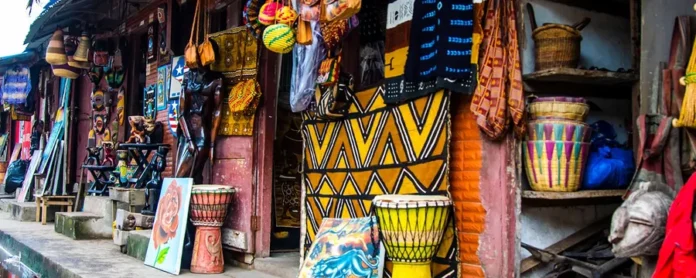In a world increasingly dominated by technology and automation, the significance of handicrafts and creativity might seem to be fading. However, these traditional arts hold a special place in society, offering more than just a means of artistic expression. Handicrafts and creativity are vital for personal growth, cultural preservation, economic development, and mental well-being. This blog delves into why handicrafts and creativity are important and how they contribute to both individual and collective prosperity.
1. Preserving Cultural Heritage
Handicrafts are often deeply rooted in the cultural and historical fabric of societies. Traditional crafts like weaving, pottery, embroidery, and wood carving carry the stories, beliefs, and customs of a community. By engaging in these crafts, artisans pass down cultural heritage from one generation to the next, keeping the history and traditions alive. This preservation of cultural identity is crucial, especially in a globalized world where the uniqueness of cultures is at risk of being lost. Handicrafts serve as a tangible link to our past, reminding us of who we are and where we come from.
2. Fostering Creativity and Innovation
Engaging in handicrafts encourages creativity and innovation. When individuals work with their hands, they experiment with materials, techniques, and designs. This process of exploration leads to new ideas and creative solutions, fueling innovation. Creativity is not just about making beautiful objects; it’s about thinking outside the box, problem-solving, and approaching tasks from different perspectives. These skills are invaluable in various fields, from business to science, making creativity fostered through handicrafts an essential asset in personal and professional development.
3. Promoting Mental Health and Well-Being
The act of creating something with one’s hands can have therapeutic effects. Handicrafts require focus and concentration, which can help individuals enter a meditative state, reducing stress and anxiety. This mindfulness achieved through crafting is similar to the benefits gained from practices like meditation and yoga. Additionally, the sense of accomplishment that comes from completing a handmade project boosts self-esteem and confidence. Engaging in handicrafts offers a break from digital screens, allowing for a more tactile and grounding experience that promotes overall mental health and well-being.
4. Supporting Sustainable and Ethical Practices
Handicrafts are inherently sustainable, as they often utilize natural, locally sourced materials and traditional techniques that have minimal environmental impact. Unlike mass-produced items, handcrafted products are made with care and attention to detail, resulting in higher quality and durability. By choosing handcrafted goods, consumers support ethical practices and contribute to reducing the carbon footprint associated with industrial production. This emphasis on sustainability aligns with the growing global awareness of the need for environmentally friendly practices.
5. Boosting Local Economies and Empowering Communities
Handicrafts play a critical role in enhancing local economies, specifically in rural and underserved areas. Craftsmanship provides livelihoods for artisans, helping them to earn a living and support their families. By creating a market for handmade goods, communities can thrive economically and socially. Handicrafts also empower individuals, especially women, by feeding them with skills and opportunities for financial freedom. In many developing regions, handicraft production is a key driver of economic growth, promoting entrepreneurship and reducing poverty.
6. Enhancing Fine Motor Skills and Cognitive Development
Engaging in handicrafts is beneficial for improving fine motor skills and cognitive development. Activities such as knitting, sewing, and woodworking need precise hand movements, which enhance dexterity and hand-eye coordination. These skills are specifically important for children and the elderly, as they support brain development and maintain cognitive functions. Handicrafts also encourage critical thinking, planning, and problem-solving, making them an excellent educational tool for learners of all ages.
7. Encouraging Mindfulness and Reducing Screen Time
In our digital age, people are increasingly glued to screens, whether for work or leisure. Handicrafts offer a break from this routine, providing a physical, hands-on activity that encourages mindfulness. Engaging in crafts requires full attention to the task at hand, fostering a sense of presence and mindfulness. This focused attention helps reduce the constant stimulation and distraction that come from excessive screen time, leading to better mental clarity and reduced stress levels.
8. Building Community and Social Connections
Handicrafts often bring people together, whether through workshops, craft fairs, or community projects. These gatherings create opportunities for social interaction, knowledge exchange, and affiliation. Working on a craft project with others fosters a sense of community, belonging, and shared purpose. This social aspect of handicrafts is important for building strong, supportive networks, which are important for both personal and community well-being.
9. Providing a Unique and Personal Touch
Handcrafted items are unique, each carrying the mark of the artisan who made it. This peculiarity gives handcrafted goods a personal touch that mass-produced items lack. When you buy or create a handmade item, you own a piece of art that tells a story and reflects the effort, skill, and creativity of its maker. This personal connection to the product raises its value and importance, making handicrafts meaningful gifts and cherished possessions.
10. Encouraging Lifelong Learning and Skill Development
Learning a new craft is a rewarding experience that promotes lifelong learning. Handicrafts provide opportunities for individuals to develop new skills, challenge themselves, and expand their creative horizons. Whether it’s learning to knit, paint, or sculpt, engaging in handicrafts encourages continuous growth and self-improvement. This commitment to learning fosters resilience, adaptability, and a sense of achievement, all of which are important for personal and professional development.
Handicrafts and creativity are more than just hobbies; they are essential elements of a rich, fulfilling life. From preserving cultural heritage and promoting sustainability to enhancing mental health and fostering creativity, the importance of handicrafts cannot be overstated. As we navigate an increasingly fast-paced, digital world, embracing the art of making can provide balance, grounding, and a deeper connection to our roots and each other. So, pick up that paintbrush, needle, or carving tool, and rediscover the joy and significance of handicrafts and creativity.



